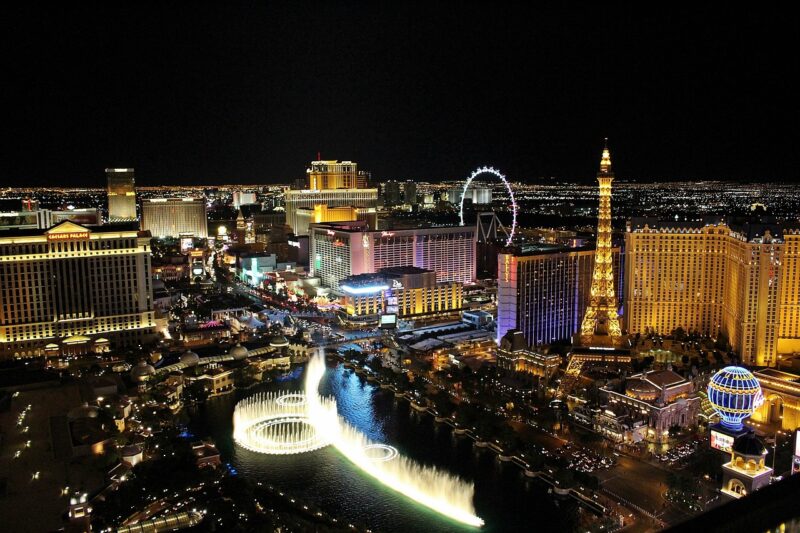How the Mafia Built Las Vegas: The Secret History of Sin City’s Criminal Roots
November 17, 2024

Las Vegas, often dubbed the “Entertainment Capital of the World,” is a city that conjures images of bright lights, extravagant shows, and high-stakes gambling. However, beneath this glitzy exterior lies a far more complex story—one that intertwines the city’s development with the Mafia’s grip on power, wealth, and influence. The fascinating history of how Las Vegas evolved from a barren desert outpost to a bustling resort city involves a tapestry of organized crime, visionary entrepreneurs, and the birth of modern entertainment.
1. The Early Days: Las Vegas Before the Mafia
Las Vegas was established in 1905, originally serving as a watering hole for travelers and a bustling hub for the Southern Pacific Railroad. The first casinos began to appear in the 1930s, but it wasn’t until the post-World War II era that the stage was set for an explosive transformation.
The United States at this time was experiencing significant change. Soldiers returning from the war sought entertainment and leisure, leading to an increase in demand for gaming and nightlife.
2. The Mafia Enters the Scene
The Mafia’s involvement in Las Vegas began in the 1940s when organized crime figures recognized the potential for profit in the gaming industry. Lucchese crime family associate, Frank “Lefty” Rosenthal, and his connections played a crucial role in establishing the underground economy of Vegas through various casinos.
Rosenthal managed the Stardust and the Fremont, where he used his influence to manipulate outcomes and profits. The Mafia recognized that in order to maintain their operations, they needed to establish legitimate as well as illegitimate businesses, creating a covering for their interests.
3. Building the Strip: The Rise of Mega-Casinos
In the 1950s, Las Vegas transformed into a destination for high rollers, leading to the construction of iconic hotels and casinos, many of which were financed by organized crime. Dreamers like Bugsy Siegel pushed for the development of larger and more luxurious establishments.
The Flamingo, opened in 1946, was the first luxury hotel-casino on the Strip and was notoriously linked to Siegel’s operations. His ambition and lavish lifestyle made headlines, but his downfall came in 1947 when he was murdered, a victim of the very world he helped cultivate.
4. The Vegas Mirage: A Front for the Mob
Not only did the Mafia influence existing casinos, but they also garnered new opportunities through established partnerships. The late 1960s saw the rise of a new era where casino owners sought greater legitimacy but remained interconnected with the Mafia. The Mirage opened in 1989 and marked a significant shift—using both spectacular gambling and high-end entertainment, it drew massive crowds and legitimized ongoing mob operations.
While the facade was glamour, much of the behind-the-scenes action was still organized by Mafia figures. The networks of power involving Las Vegas hotel-casino ownership were complex, marked by loans, extortion, and even murders.
5. The Purposeful Shift to Legitimacy
As the gaming industry expanded, law enforcement intensified their scrutiny of organized crime’s influence in Las Vegas. By the 1980s, casino owners opted for a more legitimate approach, attempting to disassociate from violent crime.
This led to significant changes, including the decline of the Mafia’s power within the industry, as influential figures began to sell their interests or seek out clean financial partners. Business conglomerates took over many operations, establishing themselves as the new owners of Las Vegas.
6. Legacy of the Mafia in Modern Las Vegas
Despite the exodus of organized crime figures from the Las Vegas scene, the influence of the Mafia remains inherent in the city’s character. Some of the architectural designs, casino layouts, and even aspects of the entertainment industry still reflect the bygone opulence and extravagance the mob defined. The evolution of those early mobsters into legitimate businessmen has set the stage for modern-day Las Vegas’s development.
With newer entertainment forms, pristine casinos, and family-friendly resorts, the city still carries the shadow of the Mafia’s golden age. The knit fabric of Sin City would be entirely different without its notorious roots.
7. Conclusion: The Intersection of Crime and Commerce
The history of Las Vegas is a compelling narrative showcasing how the Mafia built and influenced the city into a premier global destination. The tension between organized crime and legitimate business is still a topic of intrigue and fascination in documentaries, films, and literature that celebrate or scrutinize the darker aspects of its origins.
What started as a barren stretch of land transformed through ambitious individuals—many tied to underground networks—into a megacity of entertainment and pleasure. The legacy of the Mafia in Las Vegas is one of caution against the pursuit of the American Dream, illustrating that behind the glitz and glam lies a story woven with crime, ambition, and ultimately, change.
As you stroll down the neon-lit Strip, remember that Las Vegas’s allure has deep and often tumultuous roots, forever marking its place in America’s cultural landscape.







